What Is Paintless Dent Repair?
February 26, 2025
Exploring paintless dent repair (PDR) with Texas Dents
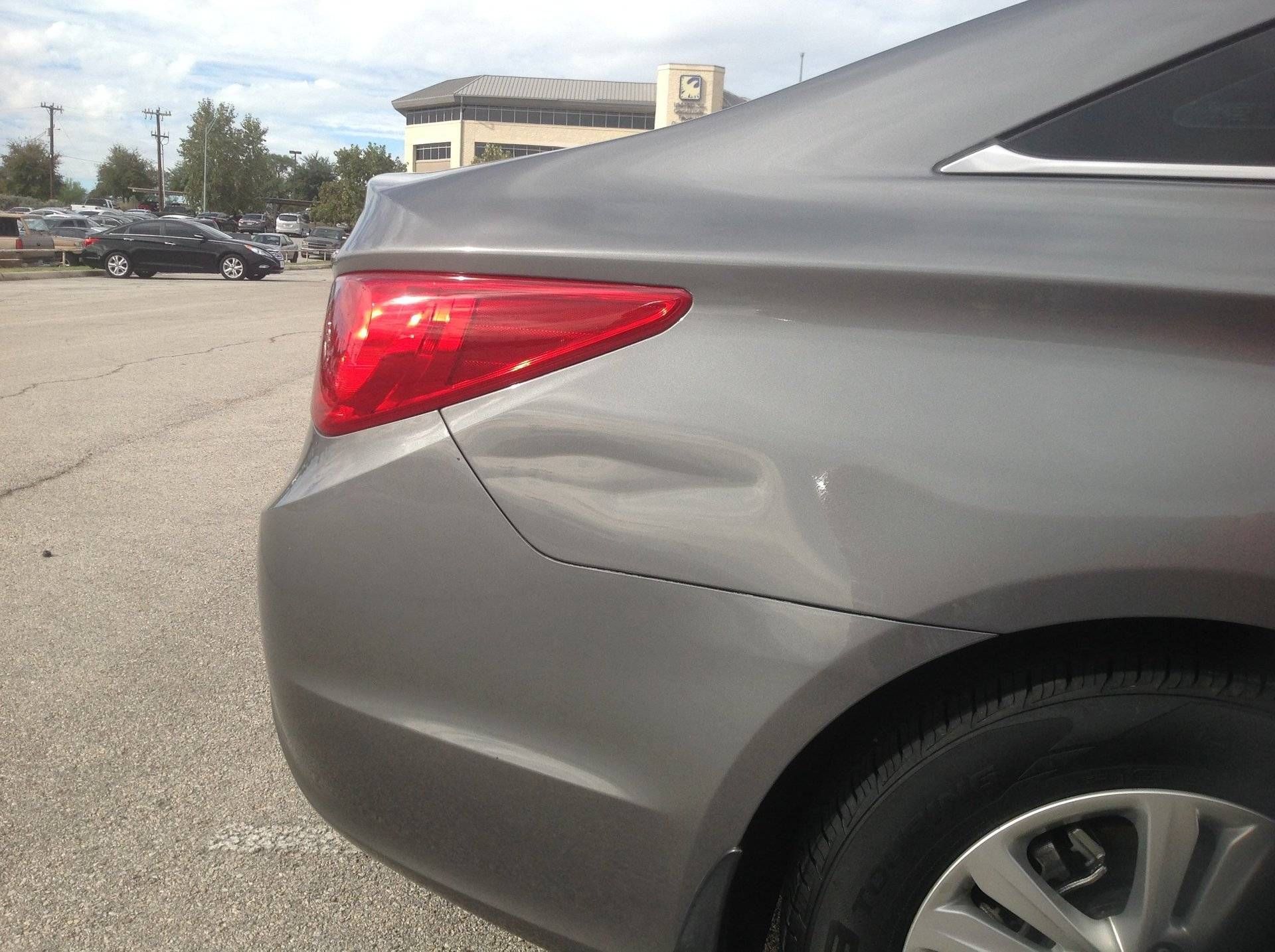
If you've heard the terms "paintless dent repair" or “PDR,” but aren't quite sure what it means or how it works, you're not alone! PDR is a widely popular, efficient and affordable way to fix dents and dings on your vehicle without harming the original paint. When hailstones leave small dents across your car’s hood, roof or trunk, PDR can restore the smooth, flawless surface without affecting the paint. Today, Texas Dents
is exploring paintless dent repair to explain the process, when it works best and all of the benefits.
Small to Medium Dents
Severely Damaged Areas
Why Choose Texas Dents for PDR
How Does It Work?
Imagine your car has a small dent, but the paint isn’t cracked or damaged. With paintless dent repair, technicians use special tools to push the dented metal back into place from behind the panel or pull it outward from the front. Because the process is so precise, it doesn’t disturb the paint, leaving your car looking as good as new without the need for sanding, fillers, or repainting. It’s like reshaping the metal as if the dent never happened!
Benefits of PDR
PDR is particularly appealing to car owners and dealerships who want a quick, high-quality repair without compromising their vehicle's appearance or value.
- Cost-Effective
PDR is usually cheaper than traditional dent repair methods because it doesn’t require repainting or extensive labor. - Time-Saving
The process is faster than traditional repair methods, often completed in a few hours instead of days. - Preserves Original Paint
PDR maintains the vehicle’s factory paint, which is important for retaining its value and avoiding mismatched paint. - Environmentally Friendly
Since it doesn’t involve painting or the use of fillers, PDR reduces the use of chemicals and waste. - Best for Minor Damage
People often search for PDR to fix hail damage, small door dings, or dents caused by minor accidents. - Resale Value
It’s a preferred method for maintaining the resale value of a car since it leaves no visible evidence of repair.
Dents That Can Be Repaired with PDR
Small to Medium Dents
Typically, dents the size of a dime to a grapefruit can be repaired using PDR, depending on their location and severity.
Shallow Dents
Dents with minimal depth are ideal for PDR, as they can be pushed out without stretching the metal or cracking the paint.
Hail Damage
Common for PDR, as hail usually causes small, shallow dents without significant paint damage.
Door Dings
Dents caused by other car doors or shopping carts in parking lots are easily repaired with PDR.
Round or Smooth Dents
Dents with smooth edges and no sharp creases are more likely to be fixable with PDR.
Areas with Flexible Panels
Certain parts of the car, like the hood, doors, fenders, and trunk, are better suited for PDR as they are more accessible and can be worked on from behind.
Dents That Cannot Be Repaired with PDR
Severely Damaged Areas
Dents where the metal is deeply creased, torn, or punctured cannot be fixed with PDR.
Sharp Creases or Edges
Dents with sharp angles or folds in the metal often require more invasive repairs.
Cracked or Damaged Paint
If the paint is chipped, cracked, or peeling in the dented area, traditional bodywork and repainting are needed.
Stretched Metal
When the dent has stretched the metal beyond its original shape, PDR may not be effective.
Plastic Components
PDR is designed for metal surfaces and won’t work on plastic parts like bumpers.
Inaccessible Locations
If the dent is in an area where technicians cannot access the back of the panel or use specialized tools effectively (e.g., near reinforcement beams), PDR may not be possible.
Extensive Collision Damage
Large, deep dents caused by high-impact collisions typically exceed the scope of PDR.
A Quick Overview of the PDR Process
The process begins with an assessment:
- The technician examines the dent to determine if PDR is suitable.
- They check the size, location, depth, and condition of the paint.
- The area is illuminated with a special light or reflection board to identify imperfections.
Accessing the Dent:
- The technician finds a way to reach the dented area, often by removing interior panels, trims, or accessing it through existing openings in the vehicle's structure.
Repairing the Dent:
- Push Method: Using tools to gently massage the metal back to its original position from the inside.
- Pull Method: Applying specialized adhesive tabs to the exterior of the dent, pulling it outward using a dent-pulling tool.
- Careful adjustments are made to ensure the dent is fully smoothed out.
Finishing:
- Once the dent is removed, the area is polished to remove any surface blemishes or minor scratches.
- A final inspection is performed under bright lights to ensure the panel is flawless.
Tools Used in PDR
PDR Rods & Bars
Long, slender tools with curved or flat tips designed to push the metal from behind the dent.
Long, slender tools with curved or flat tips designed to push the metal from behind the dent.
Dent Lifter
A pulling device that uses adhesive tabs to gently lift dents from the surface.
A pulling device that uses adhesive tabs to gently lift dents from the surface.
Glue Pulling Kit
Includes hot glue, tabs of various sizes, and a pulling tool for dents that can’t be accessed from the back.
Includes hot glue, tabs of various sizes, and a pulling tool for dents that can’t be accessed from the back.
Reflection Boards/LED Lights
Used to highlight the dent’s edges and show subtle irregularities, ensuring precise work.
Used to highlight the dent’s edges and show subtle irregularities, ensuring precise work.
Rubber Mallets & Tap Down Tools
For refining high spots or ridges created during the repair.
For refining high spots or ridges created during the repair.
Heat Guns
To prevent paint from cracking, especially in cold weather, by softening the metal and paint surface.
To prevent paint from cracking, especially in cold weather, by softening the metal and paint surface.
Why Choose Texas Dents for PDR
With a strong reputation in the community, Texas Dents is a name you can trust for reliable and professional dent repair. Whether it’s hail damage, door dings, or minor dents, we tackle a wide range of repairs with accuracy and care. And, no hidden fees—just competitive, upfront pricing for all our services. Car dealerships from Austin to San Antonio to Dallas love working with Texas Dents because we make their lives easier, their cars look better, and their customers happier. When it comes to PDR, we’re the partner Texas trusts to get the job done right, every time. Connect with us to get an estimate!
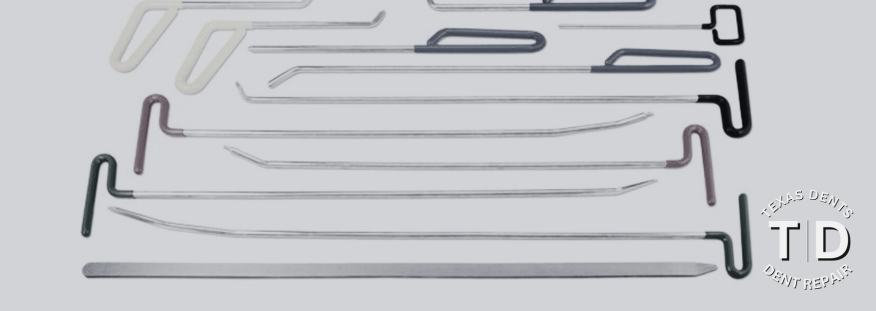
Contrary to what many believe, PDR is not just a “pop-it-out” job. And our friends who try it themselves at home with a kit they bought on eBay and a YouTube video know this to be true! Lol. It's A LOT harder than it looks. It requires finesse and years of hands-on training. We've worked on every kind of vehicle there is for nearly 20 years, so we have a deep understanding of vehicle anatomy that many PDR shops don't possess.
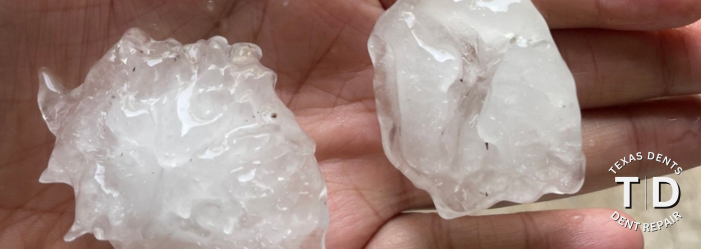
On March 31, 2025, San Antonio experienced a severe thunderstorm that brought significant hail to various parts of the city. The storm developed rapidly over Medina County and moved southeast toward the SeaWorld area around 5:30 p.m. Residents were alerted to the potential for "ping-pong" sized hailstones, 60 mph winds and frequent lightning. By 6:30 p.m. yesterday evening, the National Weather Service reported that the severe thunderstorm over San Antonio had weakened and was no longer considered severe. However, two strong thunderstorms remained in the area: one over the south side of San Antonio moving southeast at 30 mph, capable of heavy downpours, small hail, and strong wind gusts; and another near SeaWorld, moving southeast toward JBSA Lackland and Von Ormy, with potential for penny-sized hail and 45 mph wind gusts. These storms were expected to weaken over the next 1-2 hours, with rain likely ending for Bexar County by 7:30 p.m. Ping-Pong Sized Hail Residents shared images and videos of the hail on social media platforms. For instance, KSAT Connect featured photos showing golf ball-sized hail in areas like Stevens High School and Culebra and Westover Hills. KENS5 and FoxSanAntonio posted pics and videos from nearby residents. Check out our Insta reel with some of the most compelling highlights ! The far west side of San Antonio, including the Loop 1604 and Potranco area, appeared to be among the hardest-hit regions. Videos captured heavy rain and quarter-sized hail, reducing visibility on neighborhood streets. Despite the intensity of the storm, the rain-cooled air led to a pleasant evening, with temperatures dropping into the upper 60s to 70s. Looking ahead, scattered storms with minimal impact are possible over the upcoming weekend, with temperatures expected to range from the mid-80s to low 90s. Exploring Hail Formation Hail formation—especially the large hail San Antonio experienced—is a fascinating (and intense!) weather phenomenon tied closely to the strength of thunderstorms. Why did the hail form? Hail forms inside strong thunderstorm clouds—specifically cumulonimbus clouds—when there are powerful updrafts (rising currents of air). Here’s the science behind it: Supercooled Water Droplets High in the storm cloud, temperatures are well below freezing, and water droplets remain in a liquid state below 32°F. These are called supercooled droplets. Nucleus Formation These droplets latch onto particles (like dust or pollen) and start to freeze—this becomes the nucleus of a hailstone. Updrafts Strong winds within the thunderstorm carry the tiny frozen stones upward, where they encounter more supercooled droplets. Each time they go up, they grow in layers—like an onion. Hailstone Growth Cycle The up-and-down motion in the storm can happen multiple times. Each cycle adds more layers of ice, increasing the size of the hailstone. Gravity Wins Eventually, the hailstone becomes too heavy for the updraft to support, and it falls to the ground—sometimes at speeds over 90 mph! Why Was the Hail So Big? Several factors made this storm ideal for producing large hail in San Antonio: The strength of the thunderstorm determines how long hailstones stay aloft to grow Reports from the March 31 storm showed hail up to golf ball and ping-pong ball size—which means the updrafts were strong enough to keep those stones suspended through several growth cycles The atmosphere was very unstable—a sharp contrast between warm, moist air near the surface and cold air aloft This instability supercharged the storm, helping hailstones form quickly and grow large Plenty of moisture in the atmosphere (likely from Gulf moisture moving inland) provided a continuous source of supercooled water for hailstones to grow The storm likely had supercell characteristics, meaning it was rotating and well-organized Supercells are notorious for producing large hail due to their powerful updrafts and long lifespan How Meteorologists Knew It Was Coming Weather radar can detect hail with a feature called dual-polarization, which picks up irregular shapes and high reflectivity in storms. The National Weather Service issued alerts predicting ping-pong-sized hail due to those radar signatures and storm conditions. Why Choose Texas Dents for PDR Texas Dents specializes in high-quality Paintless Dent Repair (PDR), proudly serving Austin, San Antonio, and Dallas with unmatched expertise and fast, affordable service. We restore vehicles to their original condition without the need for repainting, preserving their factory finish and value. We’re proud of our exceptional reviews, reflecting our unmatched reputation for quality and customer satisfaction. If your vehicle suffered hail damage in this storm, Texas Dents is the trusted choice for flawless repairs. We've been serving San Antonio area car dealerships for more than 15 years. Connect with us online for an estimate or you can call our San Antonio shop .

It isn't every day we get to work on an iconic car like this! Last week, this amazing lowrider rolled into our Texas Dents PDR shop in San Antonio and admirers came out of the woodwork. It is truly something to behold. If you don't recognize it, it's from the Selena movie featuring Jennifer Lopez as Selena. The movie came out in 1997 and catapulted Lopez into stardom. For car lovers and Selena fans alike, the Selena Impala is more than just a car—it’s a symbol of style, culture and timeless cool. Whether you’re a fan of lowriders, classic Chevys, or just great Hollywood car moments, this ride has secured its spot on the list of legendary movie cars. In the photos, you can see the "before & after" of the dents under the lights. Funny story, one dent we just fixed actually happened during the Selena movie filming with one of the cameras. No kidding! After 28 years of having some dings, we're thrilled to restore it back to its glory—dent-free! The "Anything for Salinas" Scene In this memorable scene, Selena (portrayed by Jennifer Lopez) and her band experience a flat tire while traveling. Stranded on the roadside, they're soon approached by two fans driving a lowrider. The fans eagerly offer assistance, showcasing their deep admiration for Selena. When the car's bumper accidentally detaches, one fan famously declares, "I'm gonna put a little sign under it. It's gonna say, this bumper was pulled off by the bus of Selenas. I. mean, anything for Salinas." This scene has resonated deeply within pop culture, especially among the Latino community. It highlights the profound respect and adoration fans had for Selena, capturing the essence of her influence. The phrase "Anything for Salinas" has since become emblematic, symbolizing unwavering loyalty and admiration. Interestingly, the moment is rooted in a real-life incident. However, in reality, Selena and her sister Suzette weren't present during the actual event. The story was relayed by band members A.B. and Joe, leading the filmmakers to incorporate Selena and Suzette into the scene for cinematic effect. For a visual refresher, here's the iconic scene: https://youtu.be/Kkl4-30oHVU The vehicle featured in this scene is a classic lowrider, em blematic of Chicano culture. Lowriders are customized cars with: Hydraulic systems that a llow the car to adjust its height, often seen "bouncing" in demonstrations Distinctive paint jobs f eaturing vibrant colors and intricate designs Wire-spoke wheels that a dd to the car's unique aesthetic The Significance of Lowriders in the World of Car Collectors Lowriders are more than just cars; they’re rolling works of art, deeply embedded in car culture, Chicano heritage and automotive history. These meticulously customized vehicles are prized by collectors not only for their aesthetics but also for their engineering, cultural legacy, and exclusivity. For collectors, a lowrider is not just a classic car—it’s a one-of-a-kind masterpiece that embodies an owner's personal story, heritage, and craftsmanship. Here’s why lowriders hold a special place in the car collecting world. Lowriders As An Art Form Unlike muscle cars built for speed, lowriders are designed for style and self-expression. Each vehicle is a canvas, featuring: Intricate paint jobs with candy colors, pinstriping, murals and flake finishes Handcrafted upholstery and custom interiors, often embroidered or embroidered with cultural symbols Chrome and gold-plated details, enhancing the car’s elegance and uniqueness Engineering & Customization Lowriders are famous for their hydraulic suspension systems, allowing the cars to “hop” and “dance” with the flip of a switch. These custom mods, along with detailed wire wheels and white-wall tires, make them engineering marvels. In the collector’s market, a well-built hydraulic system and period-correct mods can significantly increase a lowrider’s value. Certain builders—like Gypsy Rose, the legendary pink Impala featured in the Lowrider Hall of Fame—are especially sought after. Rarity & Value in the Collector Market Unlike factory-restored classics, authentic lowriders are often one-offs, making them rare finds. Some factors that influence a lowrider’s desirability include: Make & Model – Impalas (especially 1958-1970 models) and Cadillac Fleetwoods are among the most sought-after lowriders History & Legacy – Cars with documented builds, celebrity ownership, or Lowrider Magazine features carry premium value Period-Correct Modifications – Classic lowriders from the ’70s, ’80s, and ’90s with OG parts are increasingly valuable as the culture moves toward preserving its history In recent years, lowrider values have surged, with some models selling for six-figure sums at auctions like Barrett-Jackson and Mecum Cultural Significance Lowriders are deeply rooted in Chicano and Latino culture, particularly in California, Texas, and the Southwest. Born in the 1940s-50s, lowriding was a way for Mexican-American communities to express pride, artistry, and identity. Over time, it became a symbol of unity and resistance—a rolling statement of cultural heritage. Collectors recognize that owning a lowrider is owning a piece of history. It’s not just about style or mechanics; it’s about the generations of craftsmanship, music, and community spirit that these cars represent. Lowriders in Hollywood Lowriders have cemented their place in films, music, and TV, further boosting their collector appeal. Iconic lowriders have appeared in m ovies like Selena (1997), Blood In Blood Out (1993) and Boulevard Nights (1979). The Future of Lowrider Collecting With lowrider culture now spanning decades, many original cars from the ’60s-’80s are aging, making well-preserved examples rarer. As a result, collectors are increasingly: Restoring vintage lowriders to their former glory Seeking original owner vehicles to maintain authenticity Turning to electric conversions, blending old-school style with modern sustainability Lowriding has also gone global, with growing communities in Japan, Europe, and South America, making these cars even more collectible worldwide Why Choose Texas Dents for PDR With a strong reputation in the community, Texas Dents is a name you can trust for reliable and professional dent repair. From car collectors to dealerships, we're the name Texas trusts. Whether it’s hail damage, door dings or minor dents, we tackle a wide range of repairs with accuracy and care. And, no hidden fees—just competitive, upfront pricing for all our services. Car dealerships from Austin to San Antonio to Dallas love working with Texas Dents because we make their lives easier, their cars look better, and their customers happier. When it comes to PDR, we’re the partner Texas trusts to get the job done right, every time. Connect with us to get an estimate !
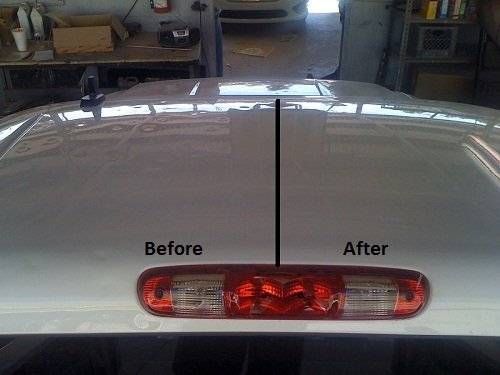
When it comes to repairing vehicle damage, Paintless Dent Repair (PDR) and body shops serve distinct purposes. Understanding the differences between the two can help you decide which option is best for your vehicle. Paintless Dent Repair (PDR) PDR is a specialized technique for repairing minor dents and dings without disturbing the vehicle’s original paint. It's best for small to medium-sized dents like h ail damage, door dings and other shallow dents where the paint is intact. How It Works The skilled technicians at Texas Dents use specialized tools to massage the dented metal back into place from behind the panel or by pulling it from the surface. Advantages of PDR Preserves Original Paint - No need for repainting, ensuring the factory finish is maintained Cost-Effective - Significantly cheaper than traditional repairs Fast Turnaround - Repairs can often be completed within days Eco-Friendly - No fillers, paint or chemicals involved Limitations PDR is not suitable for deep dents, sharp creases or damage with cracked/chipped paint. It's also i neffective on plastic parts like bumpers. Body Shop Services Body shops provide a comprehensive repair process involving filling, sanding, repainting and sometimes replacing parts. Body shops work wonders on s evere damage including large dents, scratches and structural issues. Body shops are needed where paint is chipped, cracked or requires matching. How It Works Technicians assess the damage and may use fillers or replace panels. The vehicle is then sanded, primed, painted, and refinished. Advantages Comprehensive Repairs - Can handle all types of damage, from minor scratches to severe collisions Custom Paint Matching - Ensures a flawless finish, even with extensive damage Restores Structural Integrity - Addresses underlying issues caused by accidents Limitations Higher Costs - Labor-intensive work and materials make it more expensive Time-Consuming - Repairs can take several days or weeks Paint Matching Challenges - Even with advanced techniques, some repainted areas may not perfectly match the factory finish over time How to Determine if Your Dents Need PDR or Body Shop Services The decision between Paintless Dent Repair (PDR) and traditional body shop services depends on the type, size, and severity of the dent. Sometimes it’s hard for the untrained eye to determine the damage or the severity of the dents. Texas Dents is happy to assess the damage, which can usually be done by texting photos of the dents. Upon inspecting the photos, we can let you know if PDR is right for your needs. Ideal for PDR Small to medium-sized dents caused by hail, door dings, or minor impacts Dents with smooth edges and no sharp creases Damage where the paint remains intact Requires Body Shop Deep dents or damage that affects the structural integrity of the panel Dents with sharp creases, folds, or stretched metal Areas with chipped, cracked, or peeling paint What You Can Do: Inspect The Damage If you see issues with the vehicle’s paint job, there’s a chance PDR is not going to be your best option. If t he factory paint is fully intact, with no scratches or chips, PDR may be exactly what you need because it relies on maintaining the original finish. If the paint is cracked, peeling, or damaged, a body shop will need to repaint and refinish the area. Y ou may be able to determine whether you need PDR vs. body shop based on the size of the dents. Small to medium dents (up to the size of a grapefruit) are typically suitable for PDR if the metal isn’t stretched. Larger or deeper dents are more likely to require body shop repairs, especially if the damage distorts the panel’s shape. PDR can effectively handle dents that do not affect the overall structure of the panel. If the damage compromises the structural integrity of the vehicle, body shop services are necessary for proper repair. Also, PDR is ideal if the damage is limited to the dent itself. Body shops can handle dents along with associated paint damage or scratches. Why Do Car Dealerships Use PDR Instead of Body Shops? Car dealerships often prefer paintless dent repair over traditional body shop services because it offers several advantages that align with their goals of maintaining vehicle value, minimizing costs, and improving turnaround times. Here’s why PDR is the go-to choice for dealerships: Preserves Original Factory Paint Vehicles with factory paint maintain higher resale value. Repainting can lead to mismatched colors, over-spraying, or paint that fades differently over time. Advantage for Dealerships: PDR keeps the original finish intact, ensuring a like-new appearance without altering the vehicle’s integrity. Cost-Effective Repairs PDR avoids the labor-intensive processes of sanding, filling, and repainting. Advantage for Dealerships: Lower repair costs mean dealerships can maintain or improve profit margins, especially for pre-owned vehicles. Faster Turnaround Times PDR typically takes a few days, whereas body shop repairs may require several days to weeks. Advantage for Dealerships: Faster repairs allow dealerships to quickly return vehicles to the sales lot or deliver them to customers, reducing downtime and inventory backlogs. Ideal for Minor Damage Many vehicles on dealership lots have minor dents from hail, parking lot dings, or transport. These are perfect for PDR. Advantage for Dealerships: PDR efficiently restores minor imperfections without the need for more invasive repairs. Eco-Friendly Repair Method PDR eliminates the need for fillers, paint, and chemicals that produce waste and emissions. Advantage for Dealerships: Environmentally friendly practices appeal to eco-conscious buyers and align with corporate sustainability initiatives. Better for High-Volume Repairs In Texas, hailstorms can damage multiple vehicles simultaneously. Advantage for Dealerships: PDR can quickly and cost-effectively repair a large number of vehicles, minimizing disruptions to operations. Long-Term Partnerships with PDR Specialists Many dealerships establish ongoing relationships with PDR technicians who can perform repairs on-site. At Texas Dents, we can perform repairs in our shop or on-site as needed. We offer flexible solutions to meet the needs of dealerships, many of whom we’ve worked with for more than 15 years! Why Choose Texas Dents for PDR Texas Dents specializes in high-quality Paintless Dent Repair (PDR), proudly serving Austin, San Antonio, and Dallas with unmatched expertise and fast, affordable service. We restore vehicles to their original condition without the need for repainting, preserving their factory finish and value. We’re proud of our exceptional reviews, reflecting our unmatched reputation for quality and customer satisfaction. Whether it’s hail damage, door dings, or minor dents, Texas Dents is the trusted choice for flawless repairs across Central and North Texas. Connect with us today for an estimate !
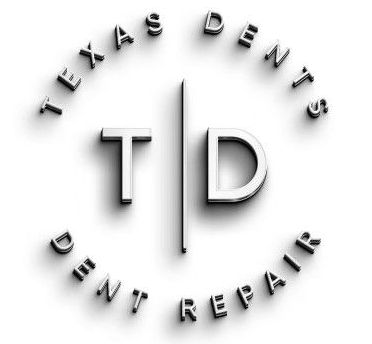

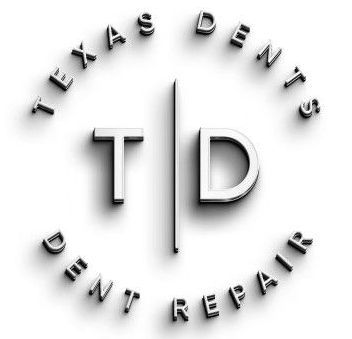
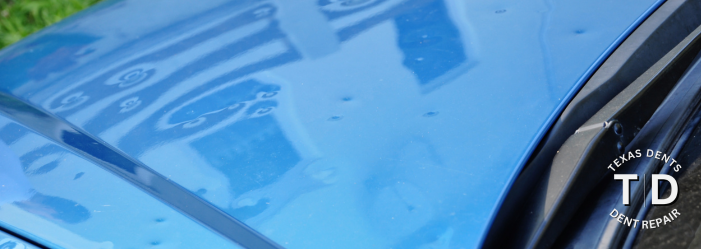
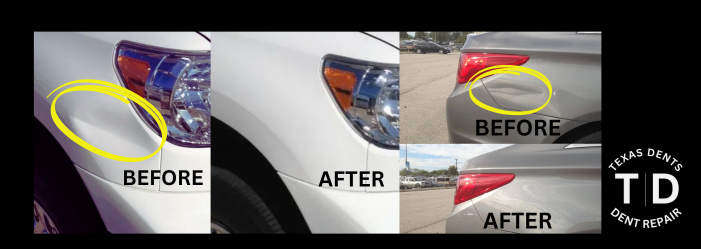
Share On: